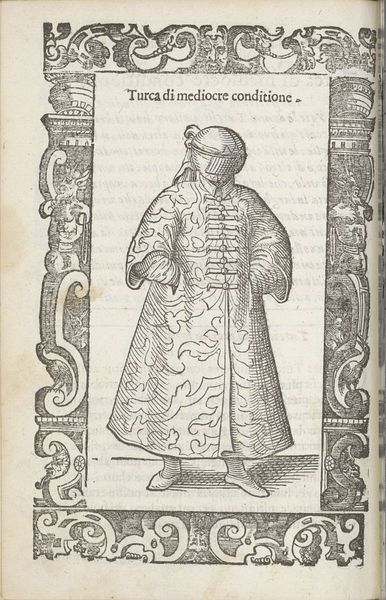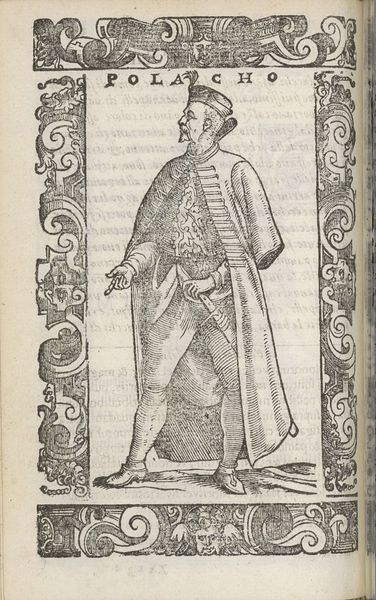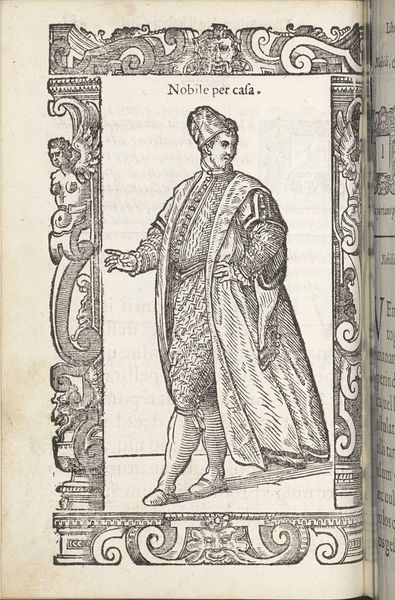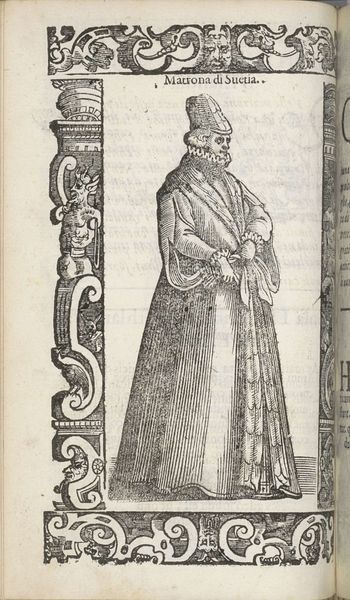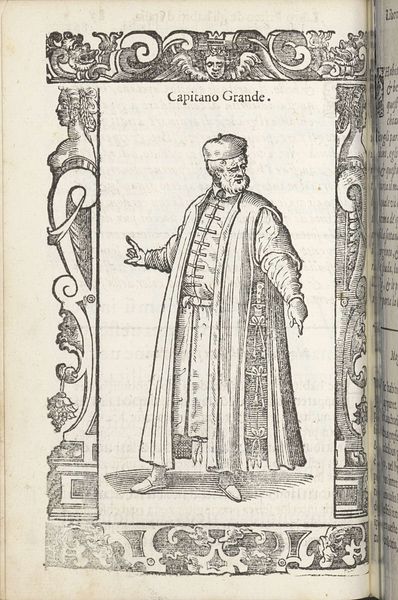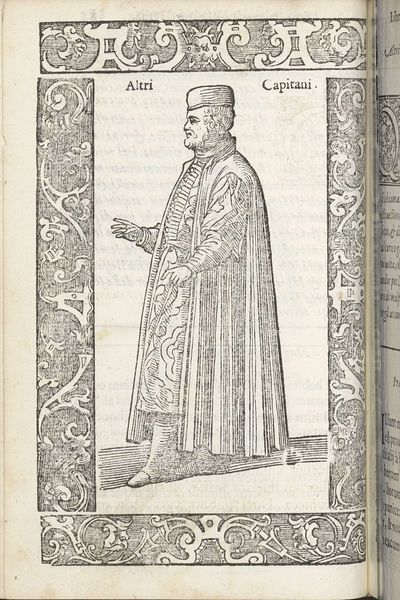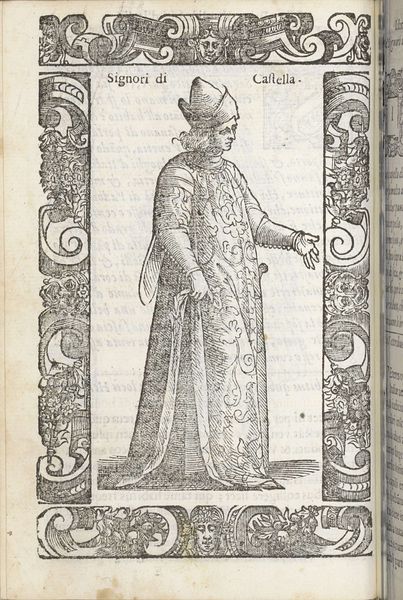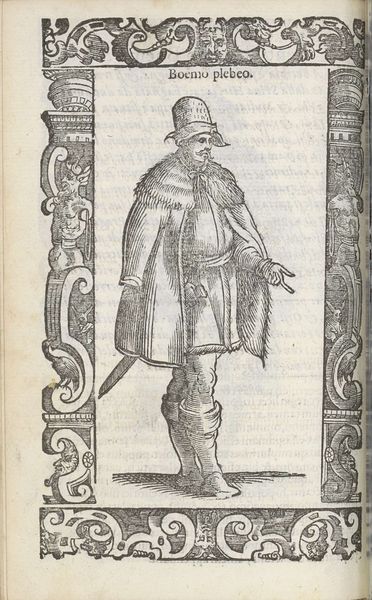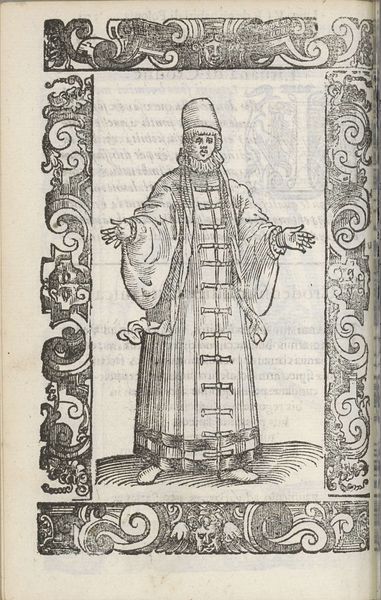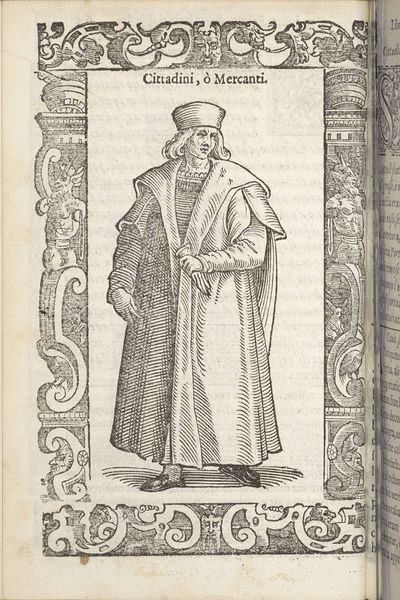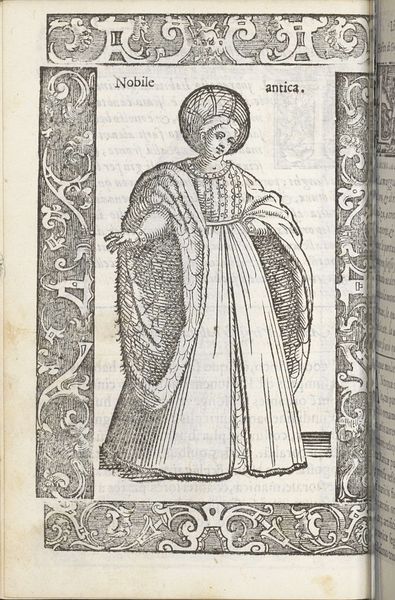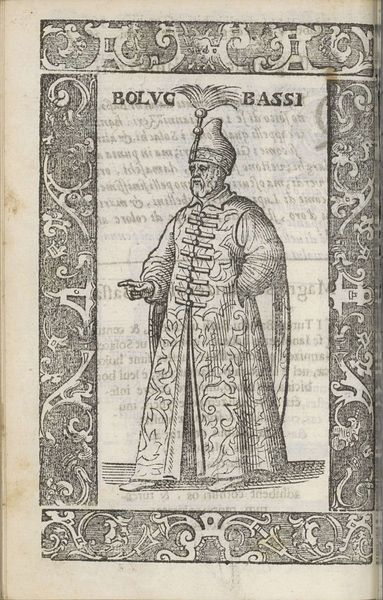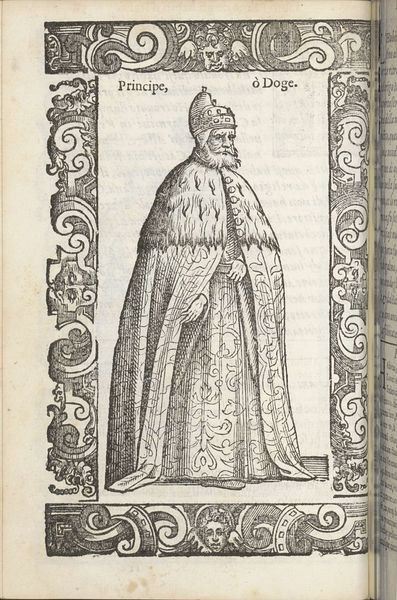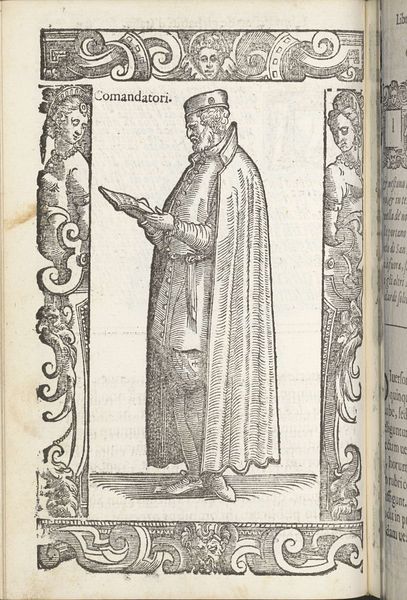
print, engraving
#
portrait
# print
#
figuration
#
11_renaissance
#
northern-renaissance
#
engraving
Dimensions: height 167 mm, width 125 mm
Copyright: Rijks Museum: Open Domain
Curator: I’m drawn to the stark contrasts of this engraving—the linear precision set against a muted gray tone. Editor: Yes, there's a somber yet refined quality here. It makes me think of class stratification. This is "Mercanti," or "Merchant," by Christoph Krieger, created in 1598. Curator: The meticulous detailing of his clothing is fascinating. Notice the layering: the high-necked shirt with ruffled collar, the toggled doublet, and the outer cloak. Each horizontal closure punctuates the linearity, guiding the eye down the composition. The frame with ornamental swirls and grotesque masks is visually very busy but harmonizes well with the sharp lines and texture of the portrait. Editor: Absolutely, the composition draws one in! Those closures and that belted sash not only mark wealth but function to visibly mark trade routes, and global economic relations that facilitated enrichment. It prompts consideration of labor relations, what those profits represent. Curator: An astute point. Returning to formal elements, though: Krieger uses hatching and cross-hatching expertly to model form and indicate shadows, even in a restricted palette. This contributes to an incredible sense of depth for a simple print. Editor: Depth, yes, and distance. While the details are striking, there is also an emotional detachment. He is both present and absent—his expression impassive. It is not an objective portrayal, and seems to communicate certain anxieties about the burgeoning merchant class and changing economic power. Curator: Interesting. From a purely stylistic standpoint, Krieger synthesizes Italian Mannerism and Northern Renaissance realism with finesse. Look at how that hat creates almost an architectural division of the image. Editor: Perhaps that very division indicates a societal shift too? An interesting subject for consideration of early globalization. Curator: Thank you for providing that valuable historical context. I always come back to the artwork itself and the visual language it uses. Editor: Of course! Considering historical forces offers deeper layers to how we interpret this artwork, allowing us to see this portrait with new perspectives on its function within a cultural climate.
Comments
No comments
Be the first to comment and join the conversation on the ultimate creative platform.
